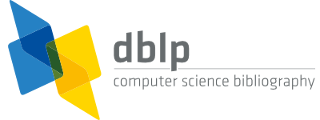


default search action
Computer Applications in Engineering Education, Volume 8
Volume 8, Number 1, 2000
- Purnendu Mandal, K. K. Wong, Peter E. D. Love:

Internet-supported flexible learning environment for teaching system dynamics to engineering students. 1-10 - Susanna Sanz, Magdy F. Iskander, Lan Yu:

Development of an interactive multimedia module on antenna theory and design. 11-17 - K. Sridharan:

Teaching computer graphics and robotics using symbolic computation software. 18-30 - Lizette R. Chevalier, James N. Craddock, P. C. Riley, B. J. Trunk:

Interactive multimedia labware for strength of materials laboratory. 31-37 - Sergio E. Perez, Gregory Zachrich, Michael Cockburn:

Monte Carlo simulation for determination of the stream function. 38-42 - Eric J. Sheppard:

What's DUE. 43-50
Volume 8, Number 2, 2000
- James C. Rautio

 :
:
The impact on education of widely available commercial 3-D planar electromagnetic software. 51-60 - Ajai Mani, Ragavendar Swamisai, Scott E. Umbaugh:

Web site for computer imaging education. 61-71 - David Báez-Villegas, David Báez-López:

An analog filter design software package using Mathematica. 72-79 - Hisham Ettouney, Hisham El-Dessouky, Hala Al-Fulaij, Ahmad Al-Ansary:

Computer package for design/rating of thermal desalination processes. 80-103 - P. R. Mawasha:

A math-package assisted approach to model variables influencing heat pumps. 104-112 - Samuel H. Huang, Kapil R. Bhura, Ge Wang:

Cutter path simulation and product visualization using AutoCAD. 113-126 - Marion O. Hagler, William M. Marcy:

The legacy of PLATO and TICCIT for learning with computers. 127-131 - Gordana Jovanovic-Dolecek, Juan Manuel Madrigal, Oscar Ibarra-Manzano:

MuDSPDEMO - Demo package for multirate digital signal processing. 132-138
Volume 8, Numbers 3-4, 2000
- Hugo E. Hernández-Figueroa:

Contributions from the International Conference on Engineering and Computer Education. 139-140 - Luís Geraldo P. Meloni:

Learning discrete hidden Markov models. 141-149 - Eric Tavares P. Santos, Sergio Vianna Fialho:

A Web-based tutor for Internet communication protocols. 150-156 - Luiz Carlos Guimarães, Rafael Garcia Barbastefano, Elizabeth Belfort:

Tools for teaching mathematics: A case for Java and VRML. 157-161 - Maria Cecília Calani Baranauskas, Nelson G. Gomes Neto, Marcos Augusto F. Borges:

Gaming at work: A learning environment for synchronized manufacturing. 162-169 - Hugo Fuks:

Groupware technologies for education in AulaNet. 170-177 - Vagner Latsch, Fernando Gil Vianna Resende Jr., Sergio L. Netto:

An on-line laboratory course on speech analysis. 178-184 - Alberto Gomez-Rivas, George Pincus:

Engineering technology special programs. 185-190 - Gordana Jovanovic-Dolecek:

Use of computers for learning basic concepts of sampling rate alteration. 191-195 - Omar Zia:

Application of intelligent control in the design of a test flight maneuver autopilot: An example of cooperation between NASA and a university. 196-200 - Luis E. Anido-Rifón, Martín Llamas Nistal, Manuel J. Fernández-Iglesias:

Labware for the Internet. 201-208 - Fernand S. Cohen, Athina P. Petropulu, Georgia Georgiou, Walid S. Ibrahim:

Multimedia digital signal processing laboratory. 209-215 - Oscar W. Márquez, Félix Balado, M. Vázquez, Domingo Docampo:

ArboX: A contribution to digital library. 216-220 - Mauricio Solar, Pablo Verdugo, Víctor Parada:

Storyboard aided design to specify multimedia projects. 221-228 - Torgeir Dingsøyr, Maria Letizia Jaccheri, Alf Inge Wang:

Teaching software process improvement through a case study. 229-234 - Marcello Sandi Pinheiro, Florangel Lozano Reyes, Miguel Garay Garcell:

A software tool for classification of objects and word problems in hypermedia intelligent tutoring systems. 235-239
- Claude Vibet:

Starting the codes that solve ordinary differential equations. 240

manage site settings
To protect your privacy, all features that rely on external API calls from your browser are turned off by default. You need to opt-in for them to become active. All settings here will be stored as cookies with your web browser. For more information see our F.A.Q.


 Google
Google Google Scholar
Google Scholar Semantic Scholar
Semantic Scholar Internet Archive Scholar
Internet Archive Scholar CiteSeerX
CiteSeerX ORCID
ORCID














